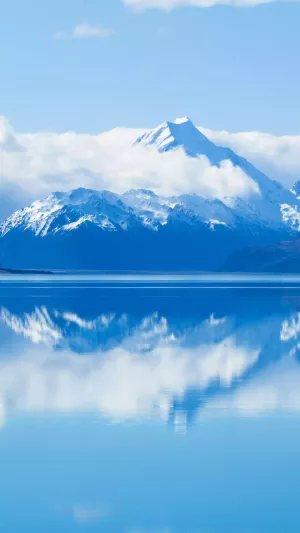The Matterhorn is located in Zermatt, a small town in the canton of Valais, Switzerland. It is 4,478 meters above sea level.
It is the most beautiful mountain in the Alps and a proud symbol of Switzerland. The Matterhorn, with its towering posture pointing to the sky, has become the representative of the Alps.
Whenever the sun sets, the snow-covered mountains reflect a metallic glow. Among the Alps, the Matterhorn is the most magnificent and the most unique mountain, and is known as the "King of the Mountains".
The Matterhorn lies above the plains, and there are no other high mountains nearby. The Matterhorn is a cone with four faces, facing north, south, east, and west.
Each face is so steep that only a small amount of snow sticks to the surface, with occasional avalanches pushing excess snow into the glacier below the peak.
According to research, some rocks on the Matterhorn were once part of Africa. Fifty million years ago, the Earth's crust moved slowly and squeezed to form the Matterhorn, whose steep horns and concave ice craters were carved by glacial erosion.
For tourists, the Matterhorn is just an unattainable beauty, but for mountaineers, the Matterhorn is a mountaineering place like their own extreme challenges. Due to the extremely steep and dangerous terrain, many mountaineers regard horses at Terhong Peak as a difficult challenge.
The Matterhorn is not the highest peak in Europe, but it is undoubtedly one of the most well-known peaks in the Alps. In the mid-19th century, the Matterhorn was once considered an unclimbable mountain.
Clearly getting to the top of the Matterhorn is fraught with difficulties: a nearly vertical spire up to 1,500 meters, overhanging rock faces. The difficulty is not only in the climbing technique but also in the psychological fear that the steep shape of this peak gave to early climbers.
The mountain was first challenged by humans more than 150 years ago. Today, more than 150 years since humans first climbed the Matterhorn, thousands of people have climbed the Matterhorn. In the process, more than 500 people fell into the cliff during the attempt.
In the face of nature, all life is treated equally. The difference here is physical strength and perseverance, observation and concentration, and even more of a belief in nature. Humans can never conquer nature, but when this planet is still so beautiful, we can measure it with our own feet, just to climb the top of the mountain and reach the magnificent wonders that others can't experience.
The town of Zermatt at the foot of the Matterhorn is the best place to see the Matterhorn. The town of Zermatt has an observation deck known as "the most beautiful panoramic view of snow-capped mountains in the world". Built at an altitude of 3110 meters, it is one of the best mountaineering destinations opened up by the Swiss with their wisdom and efforts since 1898. It takes about 33 minutes to take the cog train from Zermatt to the viewing platform, where the magnificent scenery of snow-capped mountains and peaks is breathtaking. After getting off the bus and walking for about 10 minutes, you can reach a small lake called Riffel Lake. When the water is still in the early morning, you can capture a stunning reflection of the Matterhorn.





